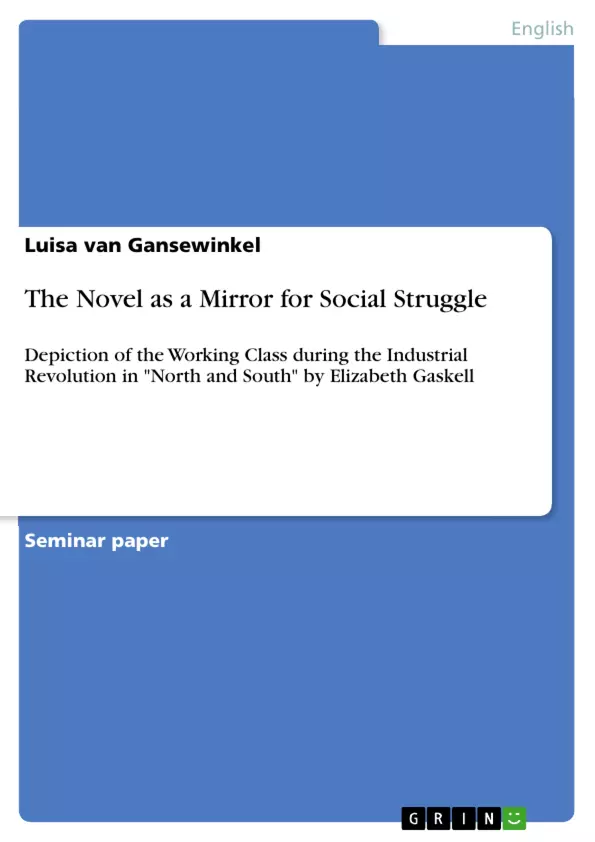This paper will focus on the character development of the workers in Elizabeth Gaskells novel "North and South" to determine which consequences the social struggle has on them and to what extent this social struggle represents the lower working class during the industrial revolution in the first half of the 19th century. The main focus on the socio-historical framework will be on the working and living conditions of the workers in during the era of 1800 to 1850. This paper will also explore how realistic the description of the living and working conditions of the working class are.
The novel "North and South" by Elizabeth Gaskell strives, much like the other novels that belong to the emerging subgenre of social novels; to explore the conflict between capital and labour in English manufacturing towns. The conflict between the factory owners and their workers within the North and South is rooted in low wages and provokes a strike that is managed by a trade union. The strike is unsuccessful, leads to a riot and results in an improvement in negotiations between employees and employers.
Table of Contents
- Introduction
- The living and working conditions as a framework
- The living and working conditions of the English workers
- The living and working conditions in North and South
- The social struggle defined
- Characterisations
- Nicholas Higgins
- John Boucher
- Comparison
- Conclusion
- Works Cited
Objectives and Key Themes
This study examines the character development of workers in Elizabeth Gaskell’s North and South to analyze how the social struggle impacts their lives. The paper aims to understand how the novel represents the lower working class during the industrial revolution in the first half of the 19th century, specifically focusing on the living and working conditions of the cotton industry workers. The analysis explores the realism of the novel’s depiction of these conditions and how it reflects Gaskell’s own experiences in Manchester.
- Character development of workers in response to social struggle
- Representation of the lower working class during the industrial revolution
- Living and working conditions in the cotton industry
- Realism in the novel’s depiction of industrial Manchester
- Gaskell’s personal experiences and their influence on the novel
Chapter Summaries
The introduction provides a background on North and South and its place within the social novel genre. It highlights the novel's exploration of the conflict between factory owners and workers during the industrial revolution. The chapter also discusses the novel's portrayal of the strike, its root causes, and its consequences.
The first chapter explores the living and working conditions of English workers in the first half of the 19th century, focusing on the impact of industrialization and population growth. It examines the rise of slums, the prevalence of disease, and the challenging working conditions within cotton mills.
The second chapter examines the specific living and working conditions portrayed in North and South, particularly in the fictional town of Milton-Northern. It compares the situation in Manchester, where Gaskell draws her inspiration, with the novel’s depiction.
Keywords
The study focuses on the social struggle, industrial revolution, working class, character development, living conditions, working conditions, cotton industry, realism, and Elizabeth Gaskell’s North and South.
- Quote paper
- Luisa van Gansewinkel (Author), 2018, The Novel as a Mirror for Social Struggle, Munich, GRIN Verlag, https://www.grin.com/document/931520



